10 Frequently Asked Questions about Wire-O Binding
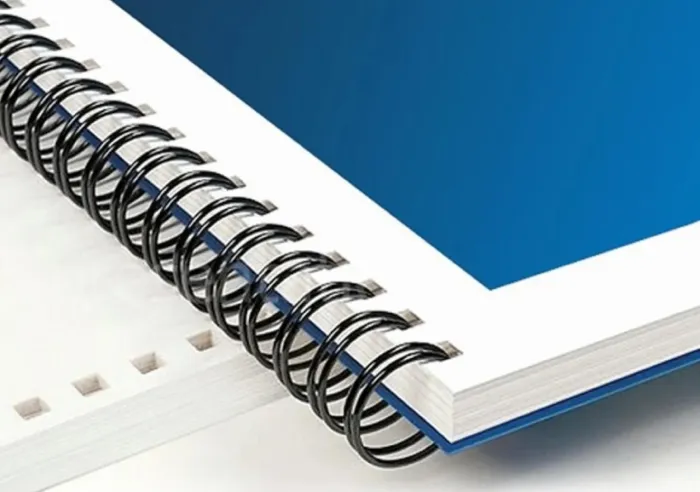
estimated reading time: 5 minutes
1. Is Wire-O Binding the same as Spiral Coil Binding?
Although these two binding methods share some
similarities, Wire-O binding is not the same thing as Spiral binding. Wire-O
binding uses a C-shaped spine element made of metal wire, which is inserted
through holes punched along one edge of a book's cover and pages. The C-shape
is then squeezed closed to form round loops that entrap the paper sheets.
Conversely, Spiral binding uses a spring-like coil, usually made of flexible
plastic, that is threaded through a series of holes punched in the cover and
pages.
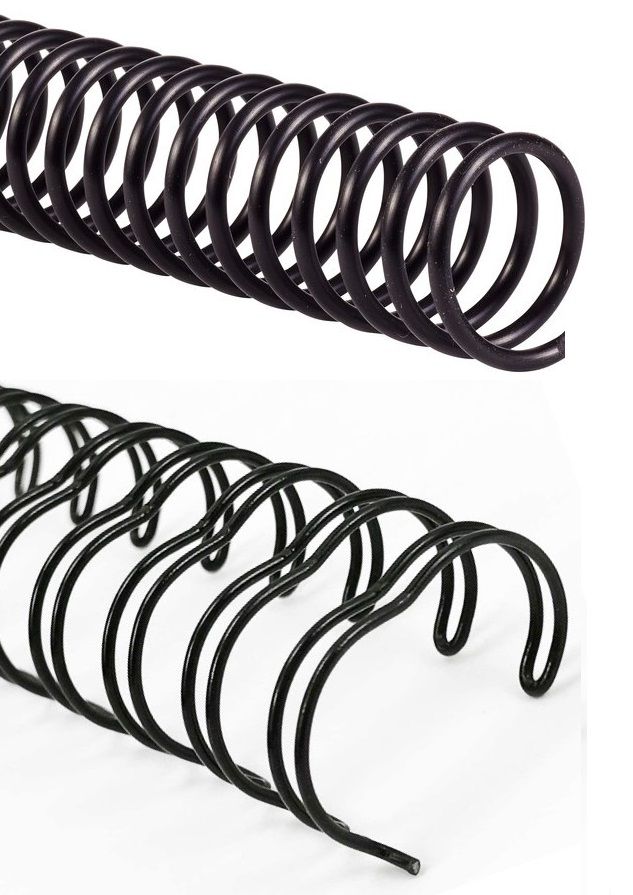
2. What are the advantages of Wire-O binding?
The Wire-O binding style adds a very professional and
high-class look to printed books. The function of the spine lets books open
fully without the need to be held open. This leaves the hands free to perform
other tasks, such as when referencing a cookbook or instruction manual.
Wire-O books can even fold back upon themselves (cover to cover). This allows
the books to take up minimal room on a table or desk. The Wire-O binding spine can also be placed
on any edge of the book - side, top, or bottom - and it is well suited for use with index tabs
that divide various sections within a book.
3. What are the finish choices?
Wire-O binding spines are available in a variety of
finishes. These include painted colors such as black, white, blue, red, green,
and gray. Wire-O is also available in metallic finishes such as gold, silver,
pewter, or bronze. These finish choices provide a complementary color for most
book projects.
4. What is the size range for Wire-O binding?
Wire-O binding spines are available in diameters that range
from 1/4" to 1-1/4". The 1/4" diameter spines can bind as little as two sheets of paper. The 1-1/4" diameter spine can accommodate a page
stack up to 1-1/8" in thickness, which equates to around 280 sheets of 20# bond
or 50# offset.
5. Wire-O binding spines are referred to as 3:1 or 2:1. What does this mean?
As mentioned above, Wire-O binding spines are installed
through holes punched along one edge of a book's cover and pages. The
references to 3:1 and 2:1 are used to designate the number of holes per inch,
which is also known as the "pitch." The term 3:1 is verbalized as "three to
one" and designates the ratio of three holes to one inch. Likewise, the term 2:1 is
verbalized as "two to one" and designates the ratio of two holes to one inch. The
Wire-O spine diameters from 1/4" to 9/16" generally have a 3:1 pitch and the
spine diameters from 5/8" to 1-1/4" have a 2:1 pitch.
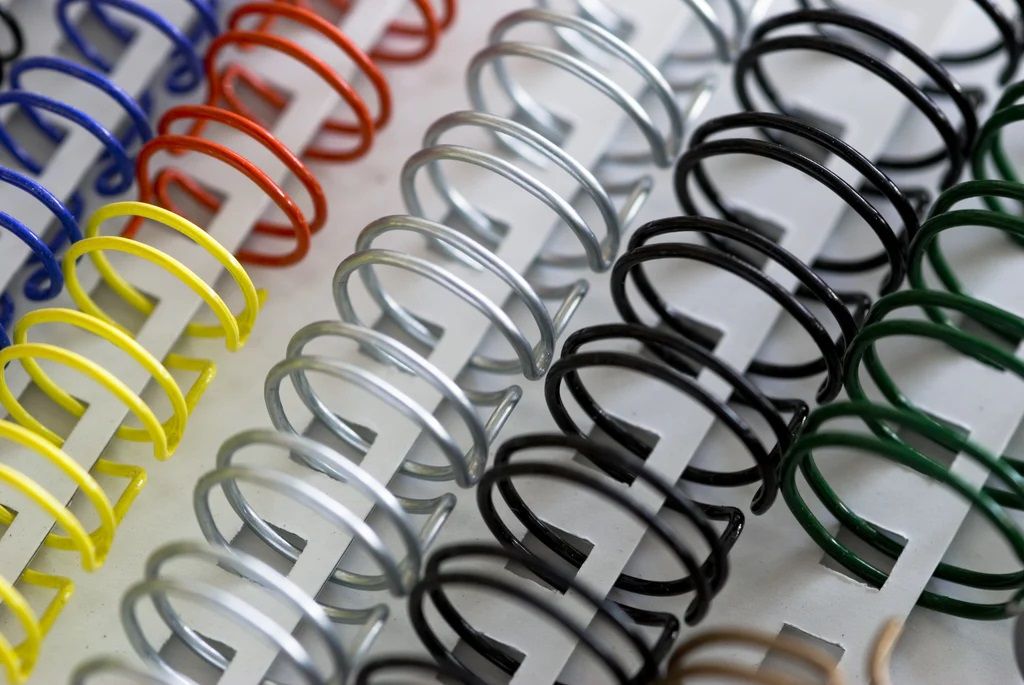
6. What types of projects are typically Wire-O bound?
Because Wire-O binding allows books to open fully and lie
flat on a desk or table without the need to be continually held open, it is an
excellent choice for cookbooks, journals, workbooks and instruction manuals. In
addition, the clean and sophisticated appearance of Wire-O binding makes it a
good choice for bound presentations, directories, and corporate reports. Wire-O
is also a popular choice for easel style calendars and self-standing flip books
because it allows the pages to flip easily and stay in place once flipped.
Furthermore, Wire-O binding is frequently used for multi-page wall calendars
because it allows the pages to hang flat against a wall.
7. Can Wire-O books be sent through the mail?
Because Wire-O binding is made from metal wire, most assume it will be strong and resilient. However, because the binding process
requires the wire to be pliable enough to form into the circle needed to secure a book's cover and pages, the metal can obviously be bent. This means Wire-O binding can also be bent or distorted if subject to excessive pressure or rough handling during mail
processing. For this reason, Wire-O bound books cannot just be placed into a Kraft
envelope or Jiffy mailer and taken to the post office. When mailing Wire-O bound
books, the outer packaging has to offer ample protection, such as a strong corrugated
box.
8. Is Wire-O suitable for crossover images?
A crossover image refers to one continuous image that spans across two opposing
pages of a book. The image "crosses over" the spine of an open book as it
traverses from the left side page to the right side page. Though there is no
law preventing Wire-O books from having crossover images, it is important
to know that Wire-O binding will interrupt the image as it transitions across
the spine area. This is due to the series of holes punched along the spine, the
wire loops themselves, and the physical gap that occurs between the left side
pages and the right side pages.
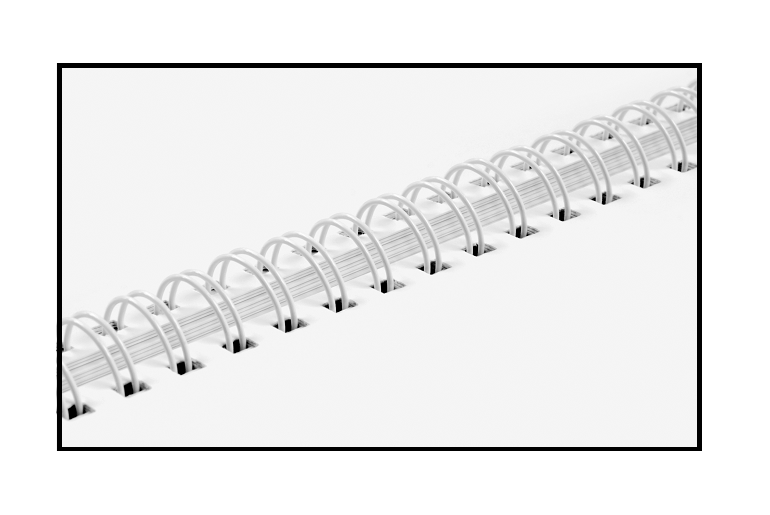
9. Can Wire-O binding be opened and closed to add or remove pages?
Wire-O binding is not really intended for book projects that require periodic page updates. Once the wire element is formed into its circular shape to bind the cover and pages, it is difficult to manually open and close it again without the loops becoming bent or misaligned. A contorted spine is not only unappealing from an aesthetic standpoint, it can affect the book's function. If a book project needs to allow for periodic content changes, custom-printed ringed binders are a better option.
10. Does Wire-O binding go by any other names?
Wire-O is the original brand name and has been in use since
1935. But, this binding style also goes by many different generic and trade
names throughout the printing and binding industry. These include Dual Loop,
Double Loop, Twin Loop, Duo-Wire, Ring-Wire and WireBind.
Color Vision Printing specializes in affordable book printing. If you have an upcoming book project and would like to learn more about Wire-O bound book printing, or any other softcover book binding method, give us a call at 800-543-6299 and we'll be happy to help. Or, if you already know your project's specs and would like a quote emailed to you, just fill out our simple Quote Request form.
As
always, we look forward to assisting with your next book project!
Related Articles
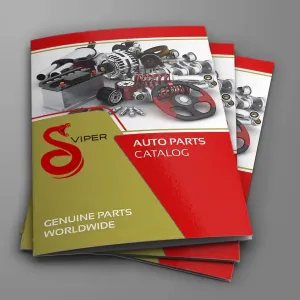
Booklet Catalogs: Why is this Catalog Format so Popular?
Read This Article
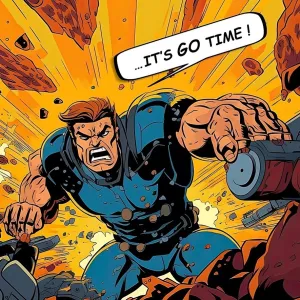
Creating a Comic Book? Here’s some Advice from a Printer
Read This Article

Perfect Binding vs PUR Binding: What is the Difference?
Read This Article

Perfect Bound Book Printing: Tips for getting the Best Value
Read This Article